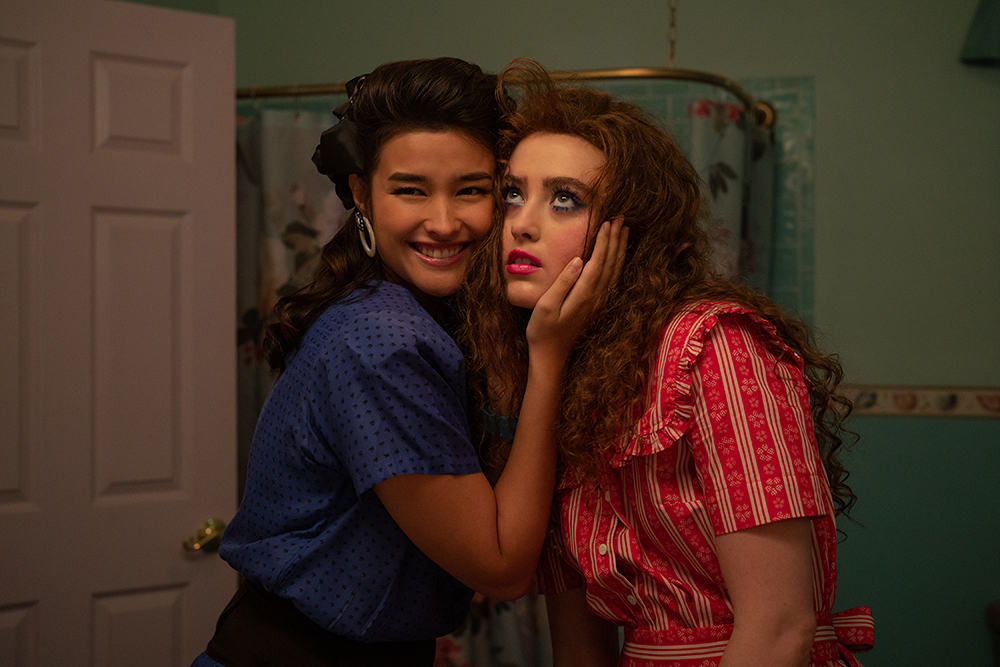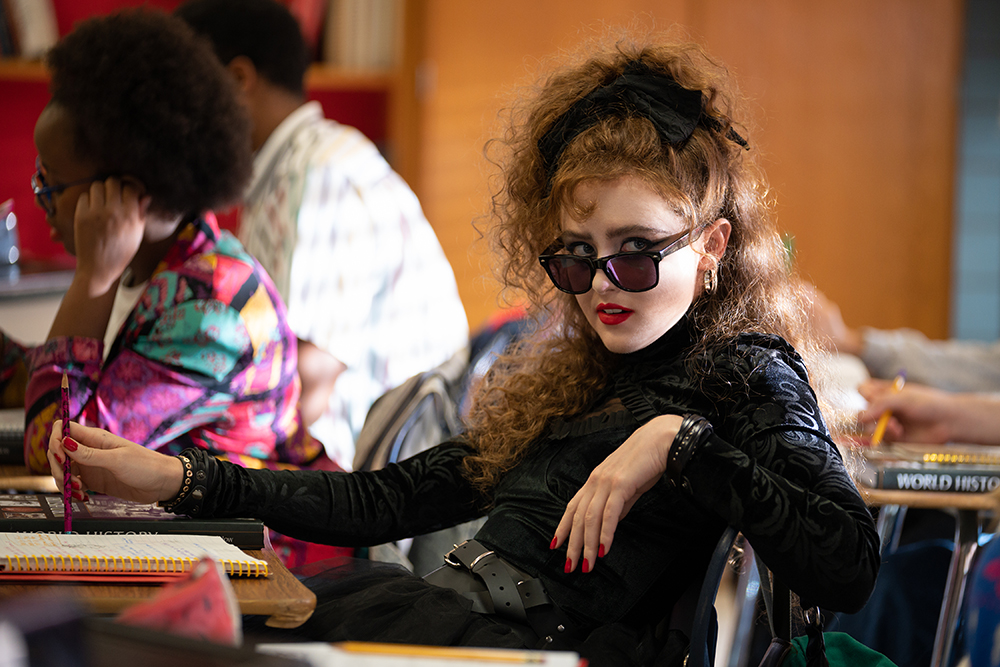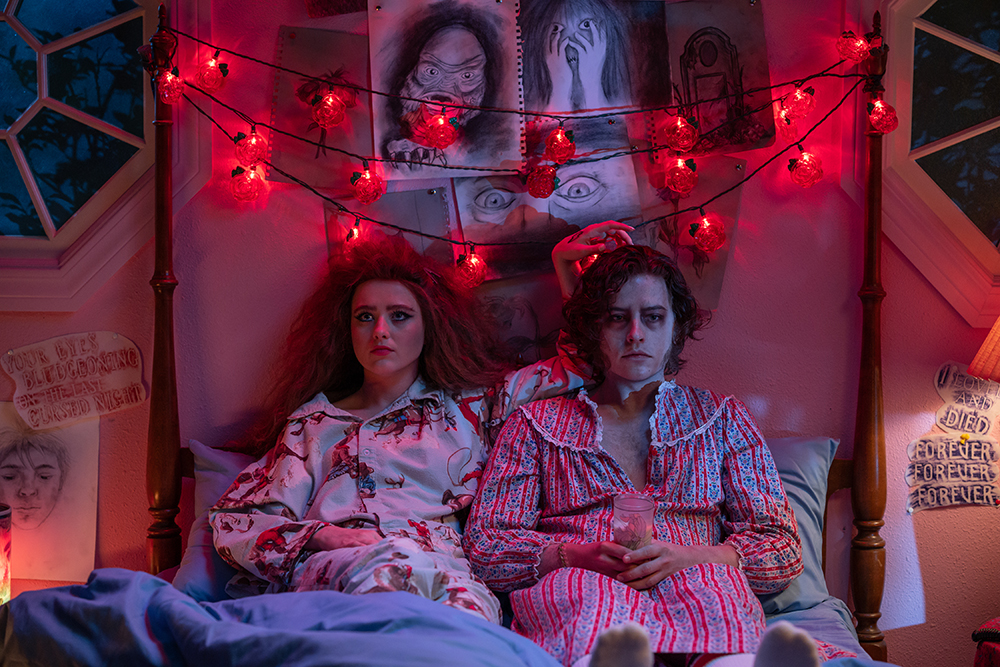“Lisa Frankenstein” (directed by Zelda Williams and written by Diablo Cody) wears its influences on its dark sleeves, opening with black and white animated credits that harken back to the work of Karel Zeman, with their dollish stick figures rocketing through cut-out stars. Watching the opening credits is like viewing some huge lost pop-up book from another era, with gigantic invisible hands twisting and pulling to make the images dance to life. Even the moon from the 1902 film “A Trip to the Moon” pops up, taking a rocket to the eye like a champ.
It’s a charming start to a film that never lives up to the promise of that magical opening. In 1989, Lisa Swallows (Kathryn Newton) is an awkward teenage girl who avoids contact with everyone around her, still coming to terms with the murder of her mother during a home invasion. She lives with her feckless father Dale (Joe Chrest), her loud and verbally abusive stepmother Janet (Carla Gugino), and her stepsister Taffy (Liza Soberano), a popular cheerleader who’s always optimistic and cheerful. Trying to escape her family, Lisa frequently spends time at the local cemetery, visiting the grave of a young poet (Cole Sprouse) who died back in the Victorian Age.
Inspiration from Burton that Doesn’t Pan Out
When a bolt of lightning strikes the grave one night, bringing the poet back to life as a zombie-like creature (AKA “The Creature”), Lisa decides to bring him back to her house and hide him in her room. Despite the fact he’s still rotting and only able to speak in groans and moans, she bonds with him. When she falls in love with Michael (Henry Eikenberry), an intellectual and artistic boy at her school, it complicates her relationship with The Creature and turns her even more against the world. What’s a girl to do when she’s willing to kill herself for one boy and kill everyone else for the other one?
Director Zelda Williams and Cinematographer Paula Huidobro saturate “Lisa Frankenstein” with the look and feel of Tim Burton’s films, vibrant pastel colors alternating with the darkest black tones in a world strewn with cookie-cutter style houses and buildings. But the look of the film is where the similarity ends. Burton’s films always had a sweetness and heart to them. There was a playful quirkiness even in his films’ darkest moments.

“Lisa Frankenstein,” on the other hand, is filled with viciousness. We learn early in the film that Lisa has gone through heavy trauma, which should make her a sympathetic character. But instead, she’s selfish, the worst kind of misanthrope, and she treats everyone in her family with total disdain. There’s really nothing likable about her. Granted, her stepmom makes Joan Crawford from “Mommie Dearest” look like June Cleaver, with her designer exercise outfits, shrill voice, verbal abuse and obsession with perfection. But Lisa’s father seems like a decent guy, even though he lets everyone walk over him.
The Actors Seem Stultified
Most interesting is Lisa’s stepsister Taffy, the most surprising and interesting character in the film. In any other film, Taffy would be the villain. Beautiful, popular and captain of the cheerleader team, the moment she first appears on-screen, you imagine her raining all types of insults and attacks on Lisa. Even her name makes her sound like the snobby bully from a dozen “Mean Girls” type films. But writer Diablo Cody makes Taffy a genuinely decent person, who goes out of her way throughout the film to help Lisa, doing everything possible to give Lisa emotional support and helping her meet people at school. Had the movie focused on her instead of Lisa, I feel it would have been a far better and richer film.
The viciousness of the film comes once “The Creature” appears. The film then slowly wanders into the violent and macabre, as an accidental murder leads to more acts of murder and dismemberment, all gleefully committed by Lisa and her new zombie pal. The murder scenes are supposed to be funny, similar to the murderous scenes in the John Waters film “Serial Mom.” But first-time director Zelda Williams just can’t pull off the same vibe. Cole Sprouse, who’s a very good actor when given a chance, spends the film groaning, grunting and mugging at the camera like the worst silent movie actor.
Diablo Cody’s script gives Kathryn Newton (who’s also a great actor) nothing to do. Her character Lisa has two modes, raging and whining, and neither one allow her to actually be funny. Even her outfits, which get progressively crazier throughout the film, seem more depressing than hilarious, a disturbing cry for attention.
You Can’t Please Everyone

On the plus side, the music throughout the film is fantastic, with a great soundtrack that mixes the score by Isabella Summers with hits from the 1980s. One scene uses the REO Speedwagon song “I Can’t Fight This Feeling” to great effect. Also, the film is visually stunning throughout.
The late stand-up comic Mitch Hedberg once bombed at a comedy club, and when someone asked him about it the next day he replied, “You can’t please all of the people all of the time, and last night they were all at my show.” “Lisa Frankenstein” isn’t going to please many people. Ultimately, it leaves you feeling empty. It falls short of capturing the beautiful gothic romance of Tim Burton’s work and will have you smiling less than Lisa. She really hates smiling.
“Lisa Frankenstein” is currently showing in theaters.



